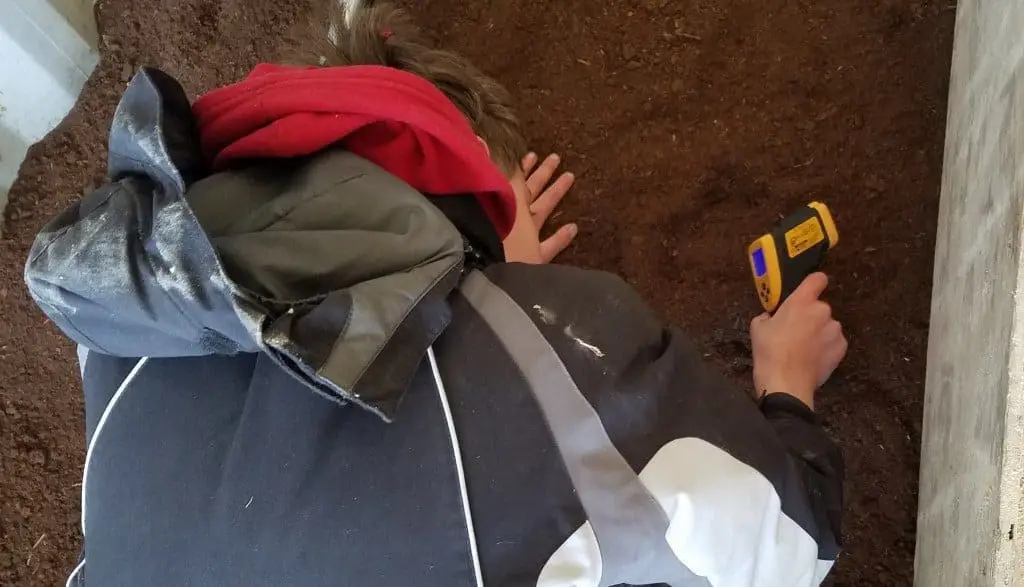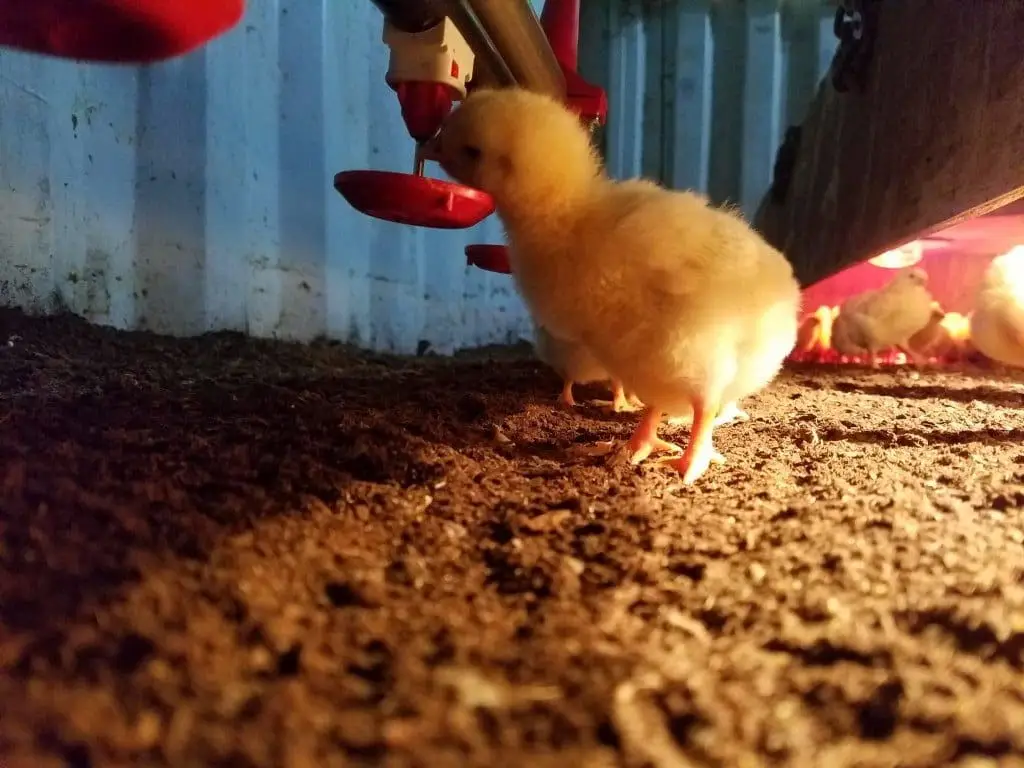Our first batch of chicks arrived on the farm last week. The arrival of the chicks marks the beginning of spring for us, whether the weather agrees or not. Tonight is the first night in a while with the forecast to be above freezing, so it seems winter is reluctantly releasing its grasp a degree at a time.
We’ve made a few changes to our chicken brooder this season. The first change was the addition of a simple tool – an infrared temperature gun. Ours is just a cheap model, but for the first time it allows us to easily measure temperatures. Chicks need to be hot (about 90 degrees) during their early days. Especially during this chilly period with nights in the teens and low twenties, having the thermometer has helped us understand which parts of the brooder needed heat lamps. As a side benefit, the kids discovered that the chicks go crazy for the red laser dot the gun projects. There were easily able to lead the new chicks to discover the water by just shining laser dots on the waterer.

The second change was a switch from wood shavings to peat moss. I’ve read about it but I’ve been reluctant to try it due to cost. Peat moss has superior absorption properties compared to wood shavings and it controls ammonia better. I’ll need to continue tracking usage through the season, but I’d hazard a guess that one bale of peat moss will provide more absorption than two equally-sized bales of wood shavings, while providing better air quality.
The third change is also related to keeping the bedding dry. The main problem we have with wetness comes from leaks and spills from the waterers. Last year I learned about a relatively inexpensive nipple drinker alternative, shortly after I bought a full set of normal vertical nipple lines. These drinkers are designed for small game birds, but they work quite well for young chickens. Each drinker has a cup at the end of the vertical nipple, so spillage is reduced to a minimum. As long as we can keep all our hose fittings from leaking, I expect this to be a great addition to our setup.

With these changes, we’re optimistic that we can keep improving our process to take better care of our chickens. Now if we could just get some warm weather so these chickens can get out there and enjoy it…
